From this article you will learn what brackets in the messages mean.
Contents
- What do brackets mean in the messages: History of application
- What does the sign of the round bracket mean at the end after the text, the beginning, the middle of the message in Watsap, VK, SMS messages-quantity: two, three, many
- What do two closed brackets mean in messages?
- What does an asterisk and a bracket mean in the message?
- What do other icons and brackets mean in messages?
- Video: What do the brackets mean in the text? Clearly and clear
Almost from the very beginning of the use of the Internet, there was a sharp need for visual display of their emotions during correspondence.
- At first, when social networks were not yet founded, and communication occurred only through a text chat, there were no various stickers, smiles and emoji yet.
- That is why an ordinary round bracket over time became a designation of a restrained smile.
- Accordingly, two or three brackets spoke of a smile "in the whole mouth."
In this article we will tell you what brackets in messages mean - one, two, three. What does it mean when brackets stand with other icons? Look for answers to these questions below.
What do brackets mean in the messages: History of application
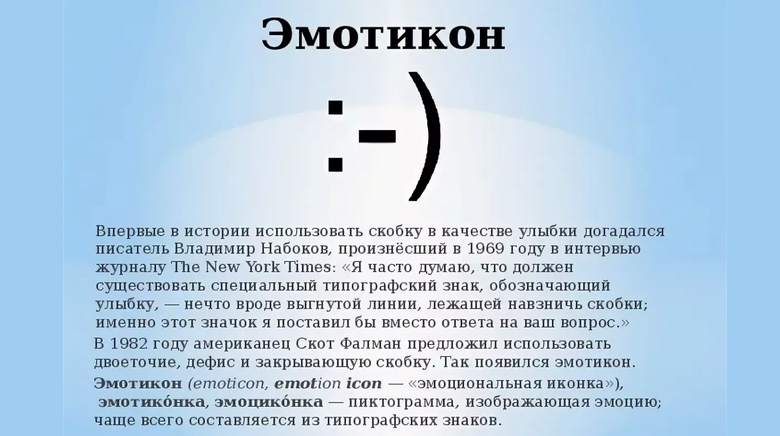
Often we don’t even think about how we put the brackets in the message, talking about our mood in relation to the interlocutor. What do the brackets mean in the messages? Here is the story of their application:
- The first brackets in the messages date back to the nineties of the last century.
- However, they are appreciated by Russian -speaking users today.
- Foreigners prefer more funny emoticons.
Why do the Russians do not use stickers, but use emoticons? The answer is simple: the whole thing is in the speed of writing:
- In order to depict a certain kind of smile, sometimes you should dial a whole combination of keys.
- But the standard bracket can be put in 2 seconds.
- It was especially convenient when corresponding from old button phones with a small screen resolution.
Another reason is the features of domestic operators that limit Cyrillic to the 70th characters.
- In order to fit the text in addition to a smile, many users put a bracket instead of a funny “kolobok”.
- This option saves symbols.
Years passed, and the habit remained. Today there are hundreds of various kinds of colorful emoticons, but some lovers of Internet minimalism still simply put the bracket at the end of the offer.
What does the sign of the round bracket mean at the end after the text, the beginning, the middle of the message in Watsap, VK, SMS messages-quantity: two, three, many
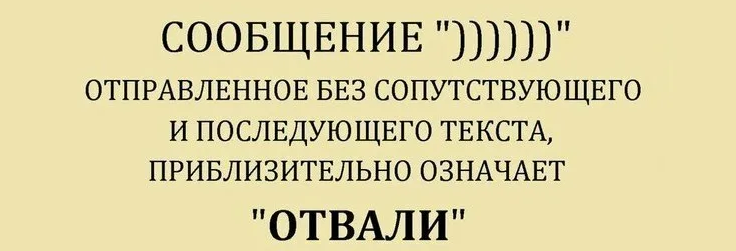
A round bracket is not a banal symbol. The perception of speech to the interlocutor largely depends on what part of the text and in what quantity and in what quantity. What does the sign of the round bracket mean at the end after the text, the beginning, the middle of the message in Watsap, VK, SMS messages? Here is an explanation about the number of brackets in the sentence - two, three, a lot:
- ) - light smile. Some put it not so much because of joy as out of politeness. This sign indicates that the interlocutor is friendly.
- )) - friendly laughter. Two brackets say that the second participant in the dialogue laughs in view of his good mood or the answer was amused. However, do not be offended. This is not an attempt to make fun of the interlocutor.
- ))) - loud and perky laughter. If the interlocutor puts three brackets, then there is no doubt that the answer really seemed funny to him. Perhaps he does not ride on the floor yet, holding on to his stomach, but close to this.
- ))))))))) - the typical "laugh, I can't". A huge number of brackets indicates that the second participant in the dialogue either really rides on the floor from laughter or simply abuses symbols in correspondence, mistakenly believing that this makes it more interesting.
The reverse bracket, on the contrary, speaks of sadness and sadness. It can also be used in different circumstances. The quantity has a completely different interpretation:
- (-Something was smoked for me.
- (( - I'm really very sad.
- (((and more) - depression, melancholy. A person really does not get along in life, he is very upset by something, or you upset him with your news.
Often, the bracket is also used in specific combinations. These are the so -called "schematic" emoticons, without cartoon display:
 - wink. Used by a person who is in a playful tone. Suppose: "Hello Beautiful!
- wink. Used by a person who is in a playful tone. Suppose: "Hello Beautiful!  Wake up? ;-) ". The point with a comma disposes the face of a person who winks cunningly. Otherwise, everything is simple: tire is a nose, and the bracket is a wide smile.
Wake up? ;-) ". The point with a comma disposes the face of a person who winks cunningly. Otherwise, everything is simple: tire is a nose, and the bracket is a wide smile.- :, ( - a person who is in sobs. Sadness in this case is very strong.
- %) - shock, dizzy. Many Internet researchers are perplexed: “What is the“ percent ”sign here? In fact, it is very simple to understand. Symbol «%» It is used in the case of alcoholic beverages. With this, you can easily associate dizziness. However, the state of strong shock in a person is akin to alcohol intoxication - he can not immediately understand what is happening, all reactions are either slowed down or strong overexcitation occurs.
- 8–) - Smiley "in black glasses". It is used to hint about confidentiality or show that his author is a “cool guy”.
Any of the above combinations, standing at the end of the sentence, indicates the emotions that the author wants to convey:
- Ivan: No, well, how we pulled out yesterday)) this is a complete departure)) and most importantly, then they drove gray after champagne))
- Katya: Don’t say) Well, what was to do? Birthday after all)) 20 years are performed once) now I’m sitting on a couple, falling asleep)
If the bracket is at the beginning of the message, this is a “response” emotion to the interlocutor’s message:
- Ivan: Cool dragged on yesterday?)
- Katia:
 Yes, and don't say)
Yes, and don't say)
As for the bracket in the middle of the message, this is an attempt to focus on the mood of a particular part of the sentence. However, brackets can be in the end, in the middle, and in the beginning. And they can be after each sentence. It all depends on what atmosphere the addressee wants to create.
Example:
- Zhenya: I don't know why I behaved like that. Probably because it was shy (((but I really liked you ((but now I don’t know what to do ((probably after the indifference that I showed, you now will not want to communicate with me at all (( - sadness, regret.
- Sasha: Ahahah, well, you give! How could it be confused? )))) And it is clear to the fool that there was vinegar in a glass, not a mineral water! And you took it, and, having come from work, drank all this to the bottom. However, I laughed for a long time, looking at your acidic mine!)))
Now you understand what the brackets mean in the message, both in different places of the proposal, and together with other icons. There are still many interesting and cognitive below. Read further.
What do two closed brackets mean in messages?
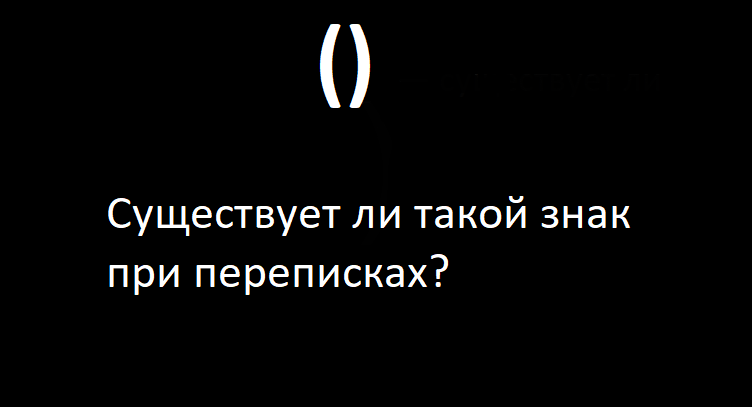
Two closed brackets in messages are often used in Japanese emoticons. In the above, they play the role of a kind of “bridgehead”, a person’s face. The remaining characters show emotion on this very face:
- (????)? - joy
- ? (???)? - love
- (??? *) - embarrassment
- (o? _?)? ”(? _‹?) - sympathy
- (???) - discontent
- ((? _?)) - Anger
- (?? (?) - Sadness
- (x_x) - pain
You can learn a combination of these signs and what they mean and use in your correspondence.
What does an asterisk and a bracket mean in the message?
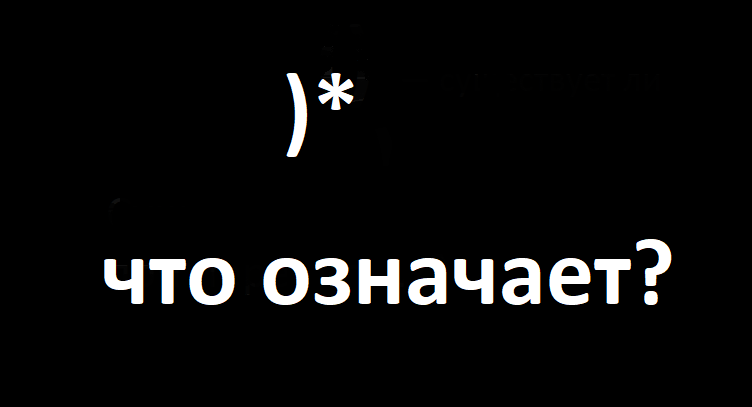
Astatic bracket - )* - Or a colon with an asterisk - :* - Traditionally means a kiss in the message. They can be used at a meeting, goodbye, or even in sympathy. In the first case, there is a kiss with a smile (for example, on the cheek when meeting good friends), and in the second - a rather serious, love kiss. Sometimes an asterisk next to a closed bracket is placed at the end of the conversation and means: “I am happy, kiss you”, “See you! Kiss you" etc.
What do other icons and brackets mean in messages?
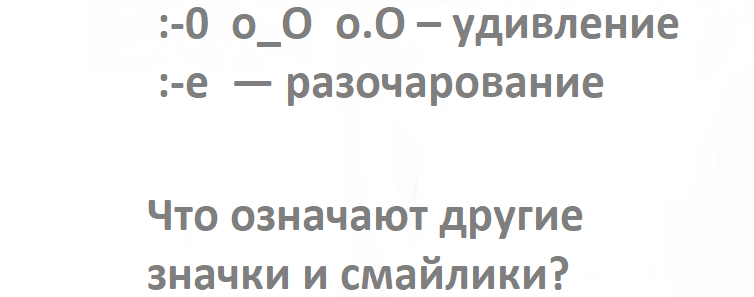
There are many other designations when brackets and other icons are used. Here's what they mean in the messages:
- ? \\ _ (?) _/? - shrugs ("How do I know?")
- : D \u003d d - well, you dare
- : ’-):’-D-under the table from laughter
- ):-›or]:-›-malevolent smile (comic or really malicious)
- :-/ (unhappy, puzzled)-I did not understand anything, but I don't like it anymore
 ._. or -_- - dismissive indifference
._. or -_- - dismissive indifference- * O* or* _* or ** - delight
- : -0 O_O O.O-surprise
- : -e-disappointment
- -E or: e or: -t-anger, rage
Today, text emoticons are used very rarely. They are replaced by emoji from Telegram and other messengers. However, on the Internet, you can still see a person who is on your "Well, what are you?" will answer ")."

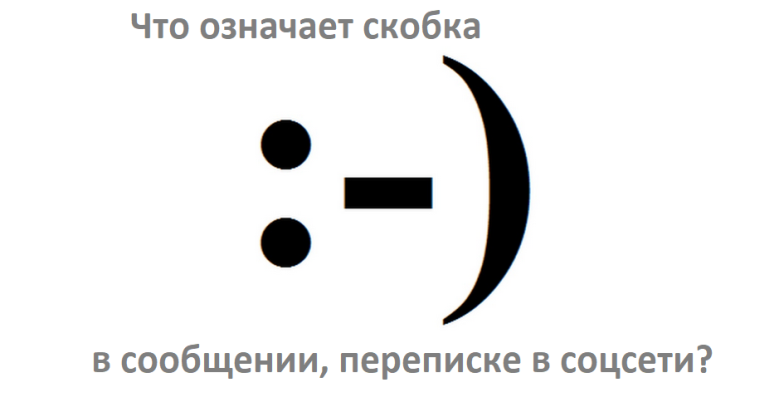






fly! I finally found out what it is for ”!



the departure finally found out what it is for)))) !! Lool
joke, but I think what there are for brackets ...)) Now it’s clear))